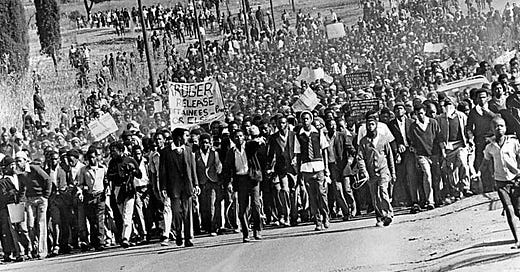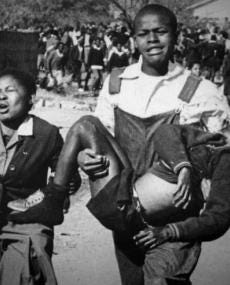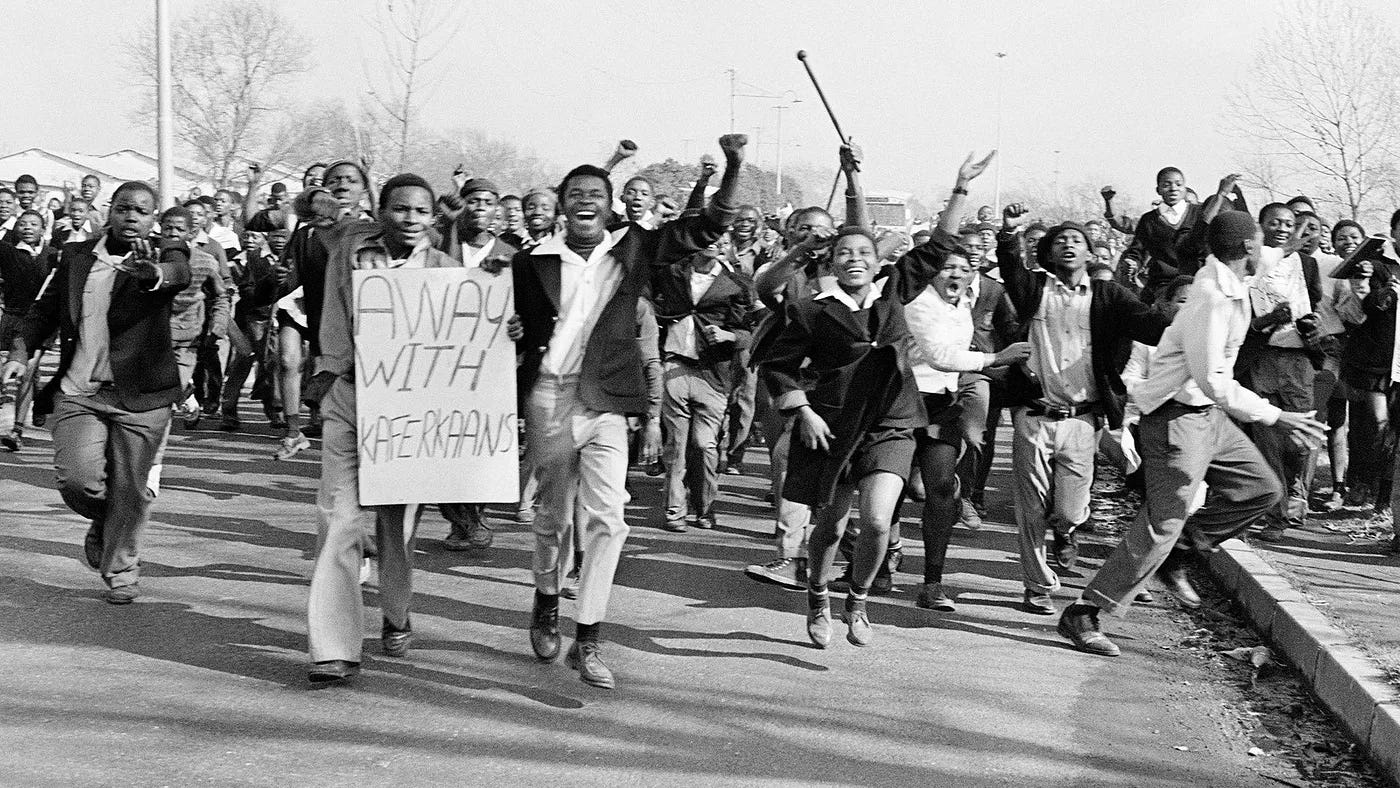The Soweto Uprising (1976) – When Children Defied an Empire
Black History Through the Lens of Liberation
On June 16, 1976, thousands of Black South African students took to the streets in one of the most powerful acts of resistance against apartheid.
They were not politicians, not soldiers, not world leaders.
They were children.
And their bravery changed the course of history.
Afrikaans: A Language of Oppression
To understand the Soweto Uprising, we must understand why language became a battleground.
Afrikaans, the language that South Africa’s apartheid government tried to force into Black schools, was not indigenous to Africa. It was a colonial invention, a language born from Dutch settlers who arrived in the 17th century and blended their dialects with local influences. These settlers—later known as Afrikaners—would establish themselves as the ruling class, creating a system of racial hierarchy that would culminate in apartheid.
By the 20th century, Afrikaans had become a symbol of white minority rule, spoken by the government, the police, and the enforcers of apartheid.
For Black South Africans, being forced to learn in Afrikaans was not just an inconvenience—it was an act of erasure. It was a reminder that their culture, languages, and very existence were deemed inferior under a system designed to strip them of power.
The 1974 Law That Sparked a Revolution
In 1974, the South African government passed a law requiring all Black students to be taught in Afrikaans for key subjects like math, social studies, and history. English, the other dominant colonial language, was still permitted, but African languages were largely banned from formal education.
This was deliberate.
The apartheid government knew that controlling education meant controlling the minds of future generations. Afrikaans was not only difficult for many Black students but also limited their opportunities—Afrikaans was the language of white oppression, while English was the language of business, politics, and global diplomacy.
The goal was clear: keep Black South Africans locked into a system of inferiority where their education was limited, their voices were silenced, and their futures were dictated by white supremacy.
But the youth of Soweto refused.
June 16, 1976: The Day Soweto Rose Up
In the township of Soweto, outside Johannesburg, students from across schools organized a peaceful protest against the forced use of Afrikaans.
They marched through the streets, holding signs demanding the right to learn in their own languages. They sang struggle songs, chanting for freedom. They carried banners that read:
"Down with Afrikaans!"
"We are not slaves!"
"We want our freedom!"
As the protest grew, the police arrived. What should have been a peaceful demonstration turned into a massacre.
The police fired live ammunition into the crowd.
Over 700 children were killed. Thousands more were injured or arrested.
One of the first victims was twelve-year-old Hector Pieterson, whose death was captured in an iconic photograph that shocked the world. His body was carried by a fellow student, bloodied and lifeless, while his sister ran beside them, screaming in horror.
The apartheid government called it "law and order."
The world called it what it was; murder.
The Uprising That Shook the World
The Soweto Uprising ignited a global outcry.
The images of children being gunned down by their own government forced the world to confront the brutality of apartheid.
South Africans responded with strikes, boycotts, and mass protests. Resistance movements like the African National Congress (ANC) and Pan Africanist Congress (PAC) gained momentum, eventually leading to the fall of apartheid in the early 1990s.
The world took notice. Countries imposed sanctions on South Africa, isolating the apartheid regime and increasing international pressure for change.
The Soweto Uprising was a turning point in the fight for South African liberation—one that proved that even the youngest voices could shake an empire.
What Happened to the Afrikaners?
The fall of apartheid in 1994 did not mean the end of Afrikaner influence. Many former apartheid leaders and white South Africans retained wealth, land, and economic power. The inequalities of apartheid did not simply disappear; they evolved.
Today, some Afrikaners claim they are the victims of "reverse discrimination" due to land reform policies and affirmative action measures meant to correct decades of systematic oppression. This narrative has been weaponized by white nationalist groups worldwide, portraying white South Africans as refugees escaping persecution.
In recent years, U.S. President Donald Trump and other far-right figures have echoed these claims, fueling white supremacist rhetoric under the guise of humanitarian concern.
Even now, 47’s administration has offered refuge to Afrikaner groups seeking asylum in the United States, arguing that they are an endangered minority facing genocide—despite the overwhelming evidence that systemic racial inequality in South Africa still disadvantages Black South Africans.
This is how colonial narratives persist.
This is how history is rewritten.
The Legacy of Soweto: Lessons for Today
Language is Power – Colonizers have always tried to erase native languages. Whether it was banning Irish Gaelic under British rule, forcing African children to adopt European languages in schools, or suppressing Indigenous languages in the U.S., language has always been a tool of control.
The Youth Are Revolutionaries – From Soweto to today’s climate justice protests, young people have always been at the forefront of change.
State Violence is a Global Tactic – The same governments that murdered children in Soweto police, imprison, and kill Black youth today. The struggle against police brutality is not just local—it is global.
Reflection: What Are Today’s Sowetos?
The Soweto Uprising was not the first or last time that young people put their lives on the line for justice.
Consider the students who fought against segregation in the U.S. during the Civil Rights Movement.
Consider the young activists leading Black Lives Matter protests today.
Consider the Palestinian children resisting occupation, their schools bombed, their futures uncertain.
Where do we see Soweto today?
Who are the young people forcing the world to look at injustice?
And what are we doing to ensure their fight is not in vain?
Further Learning
Read:
No Easy Walk to Freedom by Nelson Mandela
I Write What I Like by Steve Biko
Watch:
Sarafina! (1992) – A powerful film about the Soweto Uprising.
The 16th of June (Documentary) – Eyewitness accounts of the uprising.
Act:
Support youth-led liberation movements worldwide.
Learn about the role of language in oppression and reclaim lost histories.
Liberation is not given. It is taken. And history proves that even children can lead revolutions.
Conclusion: The Children Who Defied an Empire
The Soweto Uprising was not just a moment—it was a movement.
It was a declaration that Black children would not be silenced, that their education would not be dictated by white supremacy, and that their voices were as powerful as any government, any army, any empire.
And that power lives on.
Every young person who demands justice today carries the legacy of Soweto. Every protest, every walkout, every call to dismantle oppression is proof that the struggle did not end in 1976—it continues.
So as we remember the children of Soweto, let us also ask ourselves:
What systems of oppression still exist in education today?
How are language and history still being weaponized?
And what are we willing to do—what are we willing to risk—to fight for liberation?
Because history is clear: the youth have always been on the frontlines of revolution.
And it is up to us to ensure they are never alone in the fight.
A Personal Reflection: Ending This Series in Gratitude
As I close this series, I want to take a moment to honor my own children—my greatest teachers. Three of them are still at home- Erin, Kieran, and Morrigan (ages 5, 8, and 12,) and it is because of them that I have dedicated my life to understanding more, doing better, and fighting for a future where their joy is never compromised by oppression.
It feels fitting to end this series with a lesson about young people who faced down the weight of white supremacy and refused to be silent. Because resistance isn't always loud—sometimes, it’s simply showing up in the fullness of who you are. And in a world that was never designed to hold space for Blackness, existing unapologetically is resistance.
To my babies—thank you for the way you show up in the world. I love you endlessly.
The Fight Continues
This series may be ending, but the work of liberation is never over. I invite you to continue this journey with me—whether by deepening your learning, supporting this work, or engaging in the conversations that push us all toward a more just world.
Consider becoming a paid subscriber or purchasing the guide that will not only house all of this information but will go on to have Irish History Through the Lens of Rebellion and Resistance. This is a living document of resistance and liberation. If finances are a barrier, email me at scholarships@desireebstephens.com.
In solidarity and liberation,
Desireé B. Stephens CPS-P
Educator | Counselor | Community Builder
Founder, Make Shi(f)t Happen







Now, THAT'S what I'm talkin about!